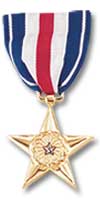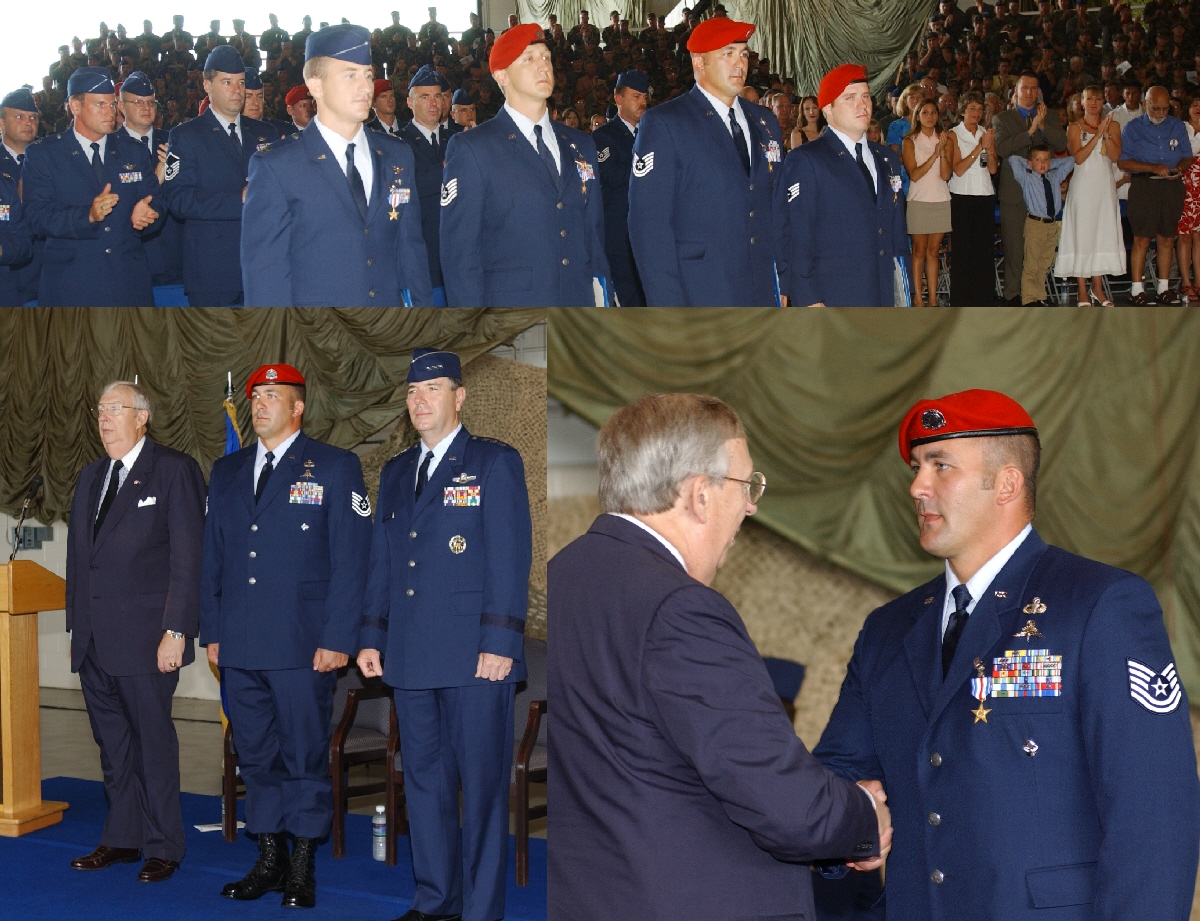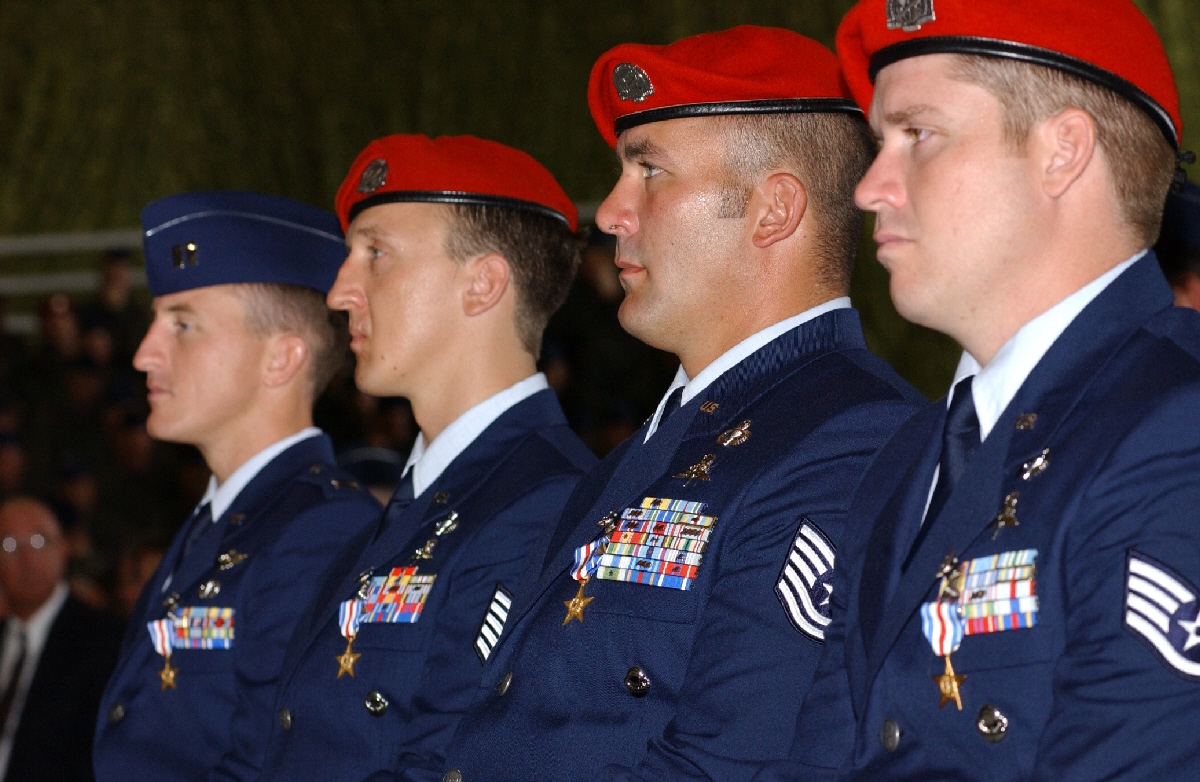The frontlines between Taliban
and Northern Alliance forces had been drawn
for nearly three years along the Panjshir Valley, with the Taliban
holding areas in and around Kabul.
What the planners didn’t expect was the pinpoint of the close
air
support (CAS)
called in by Combat Controllers! Sergeant Calvin was the first Air
Force
Special Tactics to be attached to a U.S. Army Special Forces team
during this
operation. “We arrived in country around mid-October and was
the
only team
operating behind enemy lines for the first two weeks,” said
Calvin. “I have worked with SF’s in the
past and knew several of them from previous scuba training, so we came
together
quickly as a unit.” “We knew what our mission was
–
to help the Northern Alliance break through the Taliban lines and
liberate the capital.
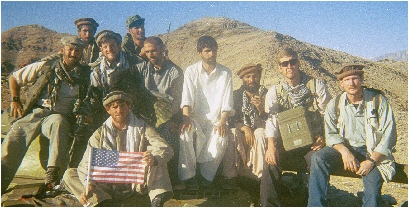 |
The first day of the
operation would signal the start of what is reported to be the longest
sustained close air support operations conducted by Combat Controllers.
“We set
up an observation post in a mountain ridge overlooking the Taliban. The
valley
was literally filled with enemy tanks, personnel carriers and military
compounds. Working with the Northern Alliance
leadership, the target was selected – a command and control
building,” said
Calvin. “I called in the first CAS and a U. S. military
fighter arrived over
the area and dropped his ordnance and hit the building.”
That first strike not only
made an impression on the Americans, it made an impact on the Northern
Alliance forces working with this Special Operations Force (SOF) team.
“I wouldn’t say they mistrusted us initially. But
there was a certain sense
they weren’t sure how we could help them. After that first
CAS run, the wall
was broken and they seemed to realize we were there to help
them.”
|
As he and the team continued
the CAS calls, the resistance from the Taliban forces waned and
Northern Alliance gained ground. Then, as Northern Alliance began its
offensive, the enemy struck
back! “We were on top of a two-story building when they began
attacking. The
gunfire was intense. Then, they turned the guns on us. It was like
large,
flaming footballs flying at out position. The buttons on my uniform
were
getting in the way of me getting low enough. All I kept thinking was I
needed
aircraft. I grabbed the radio and called for immediate CAS.”
As the SOF team got down on
the roof for cover, a Northern Alliance
officer moved over to the Controller’s area. The officer
pushed in front of
TSgt Calvin, shielding him from the attack. Later, through an
interpreter, he
told the Controller why he did it. “He said if something
happened to him, he
knew someone else would step in to take his place in the fight. But if
something happened to me the planes could not come and destroy the
targets.”
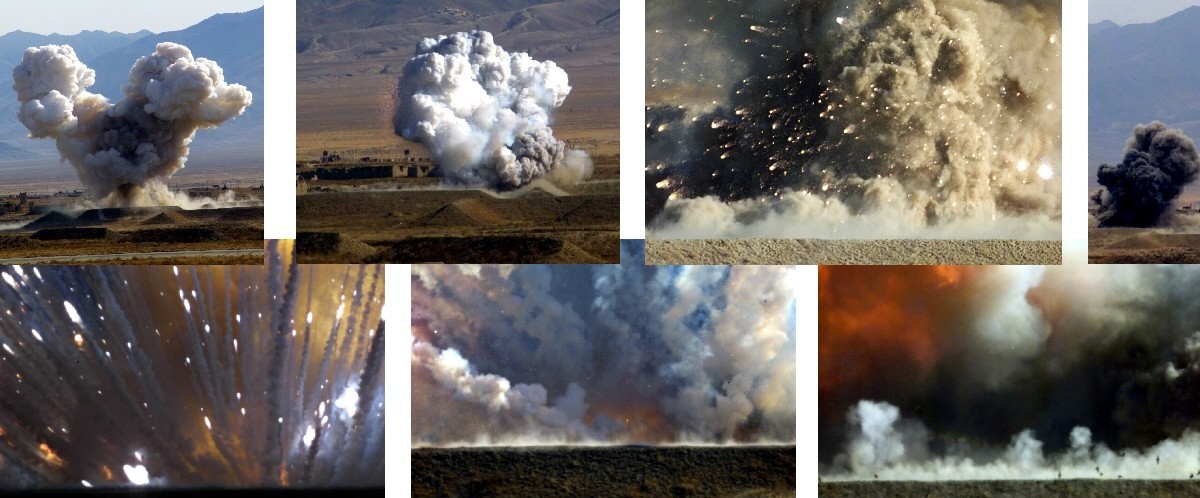
The aircraft did come –
U.S.
Navy and Air Force fighters and bombers – and the offensive
continued. The next
day, 25 days after the first call for ordnance, the Northern Alliance
moved into the capital. After ensuring the city was
secure, the SOF team headed to the American Embassy that had been
evacuated in
1989. Before fleeing the city, the Taliban had used the building as a
staging
area.
“We gained access
and one of
the first things I saw was an American Flag. It was on top of a pile of
straw.
Someone had tried to destroy it; the straw burnt and there were ashes
all over
the flag. When I picked up the flag, it was untouched – not a
burn mark on it.
With the help from a teammate I secured the flag by carefully folding
the Stars
and Stripes. I present that flag to my unit after I got back to the
States.
|
“It was amazing. It
was a
great feeling knowing we’d made the mission happen, and made
it happen in 25
days. I’ve trained what seems my whole life for the chance to
do a mission like
this, one that tests your skills and training. I said it before; we did
this
mission for America.”
While his SEAL teammates
worked in the quiet mode, SSgt Eric took the lead in making all the
noise. He
was one of two Combat Controllers embedded with the SEAL’s
during operation
Enduring Freedom.
Climbing around the mountains
of eastern Afghanistan,
the SOF team was tasked with a sensitive exploration mission to search
and
secure caves in the Zawar Kili area of the country. “My
mission was to handle
all the close air support calls and provide the ground-to-air interface
between
the team and aircraft.” “Our team was tasked to
search known or suspected
Taliban and Al Qaeda compounds, including more than 50 caves and above
ground
sites.”
He and his teammates
were
flown into the region in helicopters during January. “We were
supposed to be in
the area for about 10 hours, and it turned into a nine-day
mission.” The
exploitation began about mid-point of a valley, with the joint team
setting off
on foot patrol. “We walked up and down the mountainside
checking anything we
came across. Though the coalition forces had bombed the area before we
arrived,
we had no guarantees all the Taliban and Al Qaeda troops had fled.
“We treated
everything as hostile. With so many caves and tunnels to hide in, we
didn’t
take any chances. We had aircraft in our area in case I had to call in
emergency CAS or needed to pull out. The aircraft also kept an eye out
in front
and behind us for any moving vehicles or people.
Though the joint team
did not
find any people hiding in the caves, what they did find was a major
storage and
hiding area for Taliban forces. “Inside the tunnels we found
caches of
munitions, communication systems, fuel storage rooms, classrooms,
living
quarters and filing cabinets filled with paperwork. As each cave and
compound
was secured and vital information removed, the SEALS’s EOD
specialist would
blowup the larger munitions inside in an attempt to collapse the site.
“After
the first day, we went back and found the caves were not completely
destroyed.
|
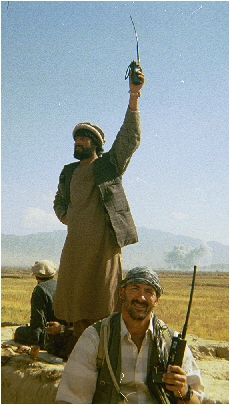 |
The CAS I called in on the site were making an impact, but
not sealing the
entrances. Many of the caves were lined with concrete and steel. Our
team
commander told us to figure out how to make the sites
inaccessible.”
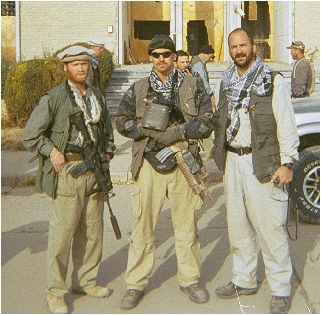 |
With no maps that reflected
all the caves, the task would fall to the extensive training we had in
land
navigation and CAS. “The first obstacles were the fact that
we didn’t have a
detailed map. When you’re talking a pilot on to a target, you
have to
understand from his perspective that the mountains and desert all looks
similar.” Relying on a compass, a GPS, notebook and pen they
set out on the
task of creating maps of the caves. “To get exact coordinates
and the layout of
the cave, we had to create a sketch for each site. It took hours of
pacing off
the inside and outside of the caves to get good data so we give exact
data to
the pilots. We gave each cave a number then plotted its height on the
mountainside,
noted any surrounding obstacles, then began pacing off the inside of
the
tunnels – the slopes, the direction it was dug in, the
turns… We tried a few
different bombing runs; bring the bombs in at different angles to get
the best
possible attack on the sites. After a few runs, we found the best
attack was to
crack the entranceway and then a second bomb to collapse the
site.” The
double-bomb drop worked perfectly. “The impact was
incredible. We had one run
that literally blew the cliff line down over the entrance. We secured
and
destroyed every cave, and ensured they would be inaccessible to anyone
again.”
“We had to contend with the
mountainous terrain and the weather elements, as well the fact we went
in with
just enough supplies to last a day and would up staying nearly 10 days.
I have
done a lot of real world missions and training exercises in this type
of
scenario, so I was better prepared for the challenge. |
We went into the area
with just the essential gear, traveling as light as possible. Going as
light as
possible meant “rucking” up mountains with more
than 100 pounds of gear. We had
all the communications gear and air traffic control equipment needed to
do CAS
calls, as well as providing the ground-to-air interface with the
aircraft. Our
training in CAS and our land navigation skills helped ensure if the
Taliban or
Al Qaeda ever tries to gain access to those caves again, they need some
heavy equipment
just to find the front door.
| MSgt Bart
Decker remembers
riding on horseback to the top of the highest peak south of Mazar-e
Sharif in
northern Afghanistan
in November, 2001 and watching the Taliban flee in pickups and
four-wheel
drives, their headlights illuminating the only road out of town to the
east. It
was almost too easy. Flicking on his GPS
receiver, Bart calculated coordinates for either end of the narrow
stretch of
highway and radioed them to B-52 bombers and F-16 fighters loitering
overhead.
Then he watched, horse by his side, as bombs rained down from the sky,
striking
the vehicles and killing their occupants with devastating precision.
Decker is
an Air Force Special Operations combat controller an unlikely
super-warrior.
His core skill is air-traffic control and his most potent weapon a GPS
receiver
available at the average electronic store. Yet, in a war driven by
precise
information about the Taliban and Al Qaeda targets, Bart and other
combat
controllers, embedded in Army Special Forces A teams, emerged as
pivotal
figures in the fusion of U.S. targeters on the ground with precision
strikes
from the air, the conflict’s most important tactical
innovation. |
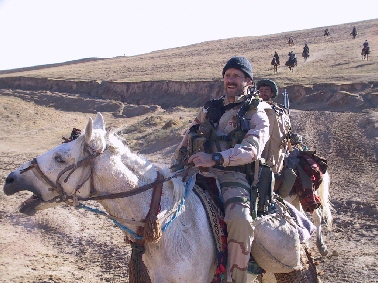 |
An Afghan militia leader
who
has fought against the Russians and with the Americans said the
air-ground
coordination was the key to the victory by U.S.-led Northern Alliance
forces last year against Al Qaeda and the Taliban militia
that sheltered the terrorist network. “The people with
Special Forces controlling
the jets are very effective – they really know what they are
doing,” he said.
“It was American aircraft that broke the front line of the Al
Qaeda.”
